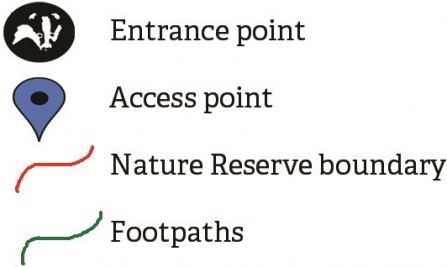
Arreton Down Nature Reserve
Arreton Down Nature Reserve
Know before you go
Dogs
When to visit
Opening times
Open accessBest time to visit
Arreton Down is beautiful all year round, but especially in the summer when chalkhill blue butterflies are on the wing, field crickets are chirping and the summer flora is in bloom.About the reserve
Arreton Down comes to life in summer when tens of thousands of chalkhill blue butterfly are on the wing, skylark and yellowhammer are in song and flora is in bloom. Home to a huge variety of plants, including horseshoe vetch, gentians and orchids, over 30 plant species can be found in one square metre, supporting a wide range of insects.
Come and see
Enjoy magnificent views over the Eastern Yar Valley in this exceptionally rich chalk grassland reserve, brimming with a huge variety of plants and insects.
As well as its spectacular panoramic views, Arreton Down supports huge botanical diversity.
In spring, the steep southern slope becomes clothed in wild flowers such as wild thyme, vetches, rock rose, pyramidal orchid and the Island speciality - early gentian.
Later in the summer, eyebright and small scabious come into flower. Such an abundance of plant life supports a wide range of invertebrates, including great green bush cricket and grasshoppers.
Birds such as goldfinch and linnet are also plentiful and migrants such as wheatear, whinchat, redstart and spotted flycatcher are frequently spotted around the reserve. Raven, kestrel, buzzard and barn owl may be seen soaring overhead throughout the year.
The land is strewn with features relating to past use, including holloways, barrows and an ancient burial mound in the north of the reserve, where artefacts have been found.
Seasonal highlights
• In spring and summer, enjoy the impressive array of butterflies on the wing including the chalk hill blue, adonis blue, brown argus and dingy skipper.
• By spring, chiffchaff and willow warbler have returned from Africa, using the power of song to claim their territory.
Arreton Down is a wonderful place to get in touch with your inner explorer. Why not bring one of our spotter sheets with you and see how many species you can identify?
Species
Habitat
Contact us
Environmental designation
Location map

Map Key
Access information
From the west at SZ 533 874. This kissing gate is accessible for mobility buggies with the use of a RADAR key.
There is a stile further down Downend Road - this is not recommended as the road here is narrow with no footpath and fast traffic!
From the south of the down a footpath is located in the village of Arreton, beginning by the White Lion pub. There is parking opposite the pub around SZ 534 866. This route passes the old church and manor, then gently climbs through fields to a kissing wicket at the foot of the down.
From the south east, a footpath leaves the village, crosses the Bembridge trail and enters the reserve at approximately SZ 540 870.
From the north, just off the road, there is another kissing wicket at approximately SZ 541 872.
There is a small area at the western end of site which is suitable for wheelchair access. The rest of site has steep slopes and uneven terrain.


